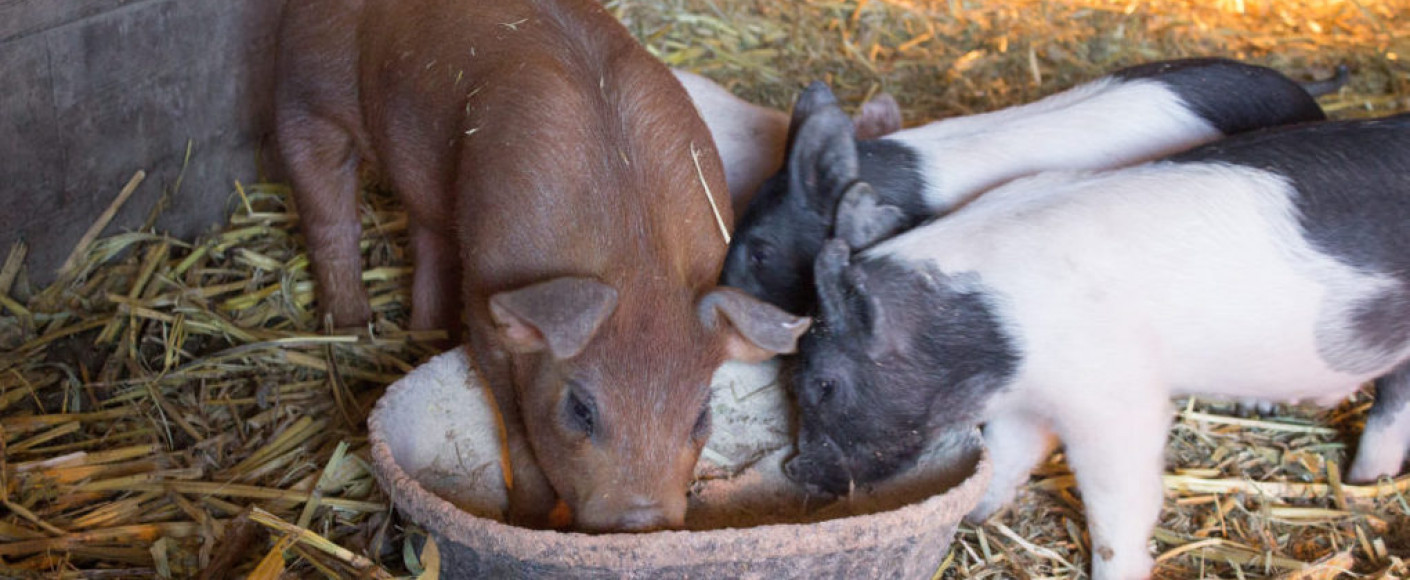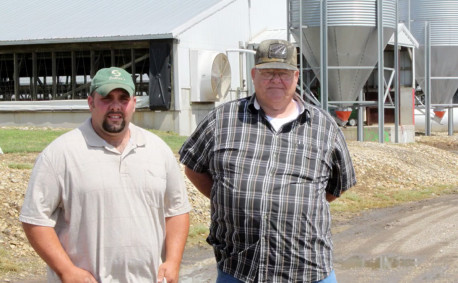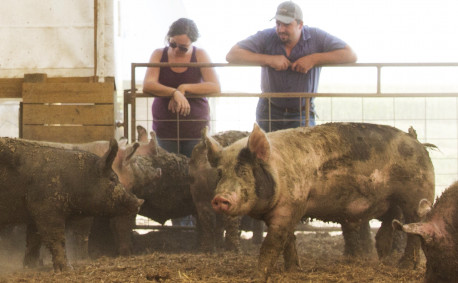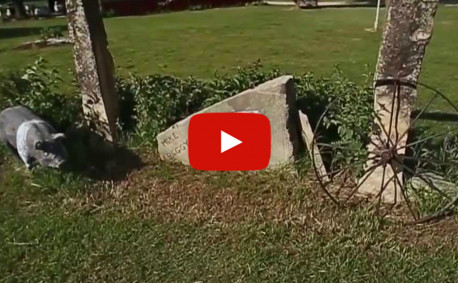How Feeding Pigs Is Helping This Kansas Farm
After graduating from Kansas State University, Caitlyn Horton moved home to help on her family’s farm north of Kendall, in southwest Kansas. The farm includes 5,000 acres of corn, wheat and sorghum, along with cattle and pigs. Caitlyn started Horton Show Pigs as a branch of the operation with two sows (adult female pigs) in 2016. Today, she has 20 sows and hopes to keep expanding.
Caitlyn and her fiancé Cooper raise the pigs to sell to local 4-H participants and to harvest for pork they then sell locally.
Feeding them has become an art for Caitlyn. Not only do her pigs eat grain produced on the farm, but she also mixes her own feed ration that she sells to the local 4-Hers along with the pigs.
“We grind our own feed here on the farm,” she said. “We feed a corn and soybean meal-based diet and then add additional supplements that pigs need into that.”
With the help of one of her former professors at K-State, Caitlyn has formulated the feed to meet the nutritional needs of the pigs throughout their different growing stages. After piglets are born they nurse on their moms for about four weeks before Caitlyn and Cooper wean them.
“At weaning, about four weeks old, corn begins to get introduced into their diets and they will have corn in their diet all the way up until they are ready to be harvested at the butcher between 270 and 300 pounds,” she said.
Caitlyn is hoping to introduce both her pig and cattle herds to a new food group in their diet this winter — cover crops. The idea started as a conservation effort for the cropland on the farm.
Cover crops like wheat, radishes and turnips are planted in early fall. The radishes and turnips will grow quickly until the ground freezes. When they die, the wheat will continue to grow as a crop for grain.
These crops provide a natural method of loosening up the soil.
“Radishes and turnips grow very long root systems so any tillage compaction you have in the soil, they will break it up and help with water infiltration in our fields,” Caitlyn said.
In addition to helping their soil, Caitlyn hopes the cover crops will be another source of food for their pigs and cattle.
“We’re just getting into this,” Caitlyn said. “Everyone tells me cattle love turnips so we’re going to see how it goes.”
This article originally appeared on the Kansas Corn website and has been edited for our website. Read the full, original article on Kansas Corn.




